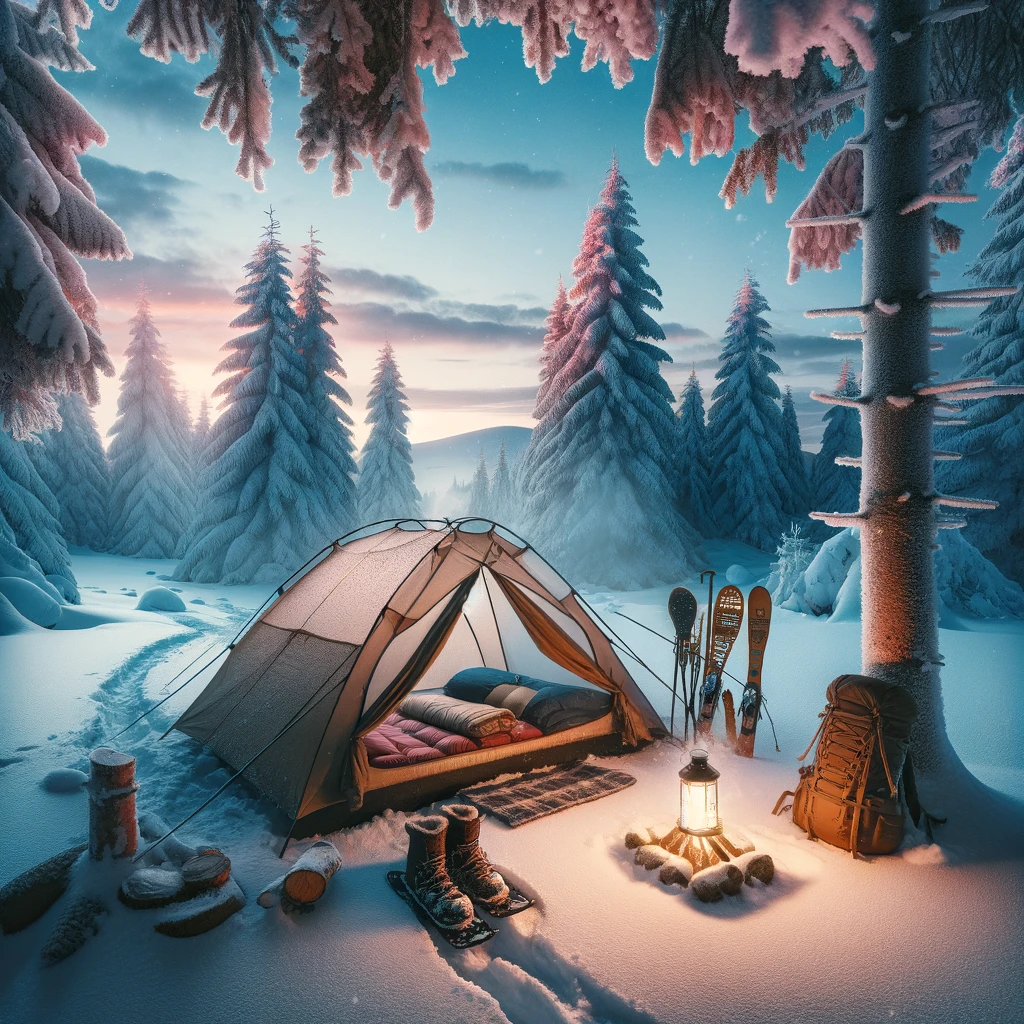Car camping in cold weather can be a rewarding experience, offering serene winter landscapes and peaceful solitude. However, staying warm is crucial for both comfort and safety. Here’s how to ensure a cozy car camping experience even when temperatures drop:
Insulate Your Sleeping Area
Proper insulation is key to staying warm while car camping in cold weather. Use Reflectix or similar reflective material on windows to retain heat inside your vehicle. This simple step can significantly reduce heat loss through the glass surfaces. Create a barrier between you and the cold car surface with foam padding or an air mattress. This insulation layer prevents the cold from seeping up from the car floor.
Bring a high-quality sleeping bag rated for temperatures lower than expected. It’s always better to be overprepared when it comes to cold weather gear. Add a sleeping bag liner for extra warmth—it can increase the temperature rating by up to 25°F. For additional insulation, layer blankets over your sleeping bag. This multi-layered approach traps warm air and keeps you cozy throughout the night.
Optimize Your Sleeping System
Your sleeping system is crucial for a warm night’s rest. Use a sleeping pad with a high R-value (4 or above for winter camping). The R-value indicates the pad’s ability to insulate you from the cold ground. Consider stacking sleeping pads for extra insulation from the cold ground or car floor for extreme cold.
Opt for a mummy-style sleeping bag to minimize heat loss. These bags are designed to fit snugly around your body, reducing the amount of air that needs to be heated. A clever trick is pre-warming your sleeping bag with a hot water bottle before bed. This creates a warm microclimate inside your bag, making it much more comfortable to slip into on a cold night.
Dress Appropriately
Proper clothing is essential for staying warm. Wear moisture-wicking base layers to keep sweat away from your skin. This prevents the chilling effect of damp clothing against your body. Add a warm mid-layer-like fleece for insulation. This layer traps warm air close to your body.
Don’t forget your extremities. Wear loose-fitting wool socks to keep your feet warm without restricting circulation. A warm hat or beanie is crucial to prevent heat loss through your head, which can account for a significant portion of body heat loss.
Manage Moisture
Moisture management is often overlooked but crucial for staying warm. Ventilate your car slightly to prevent condensation buildup. This might seem counterintuitive, but excess moisture can make you feel colder. Use a small dehumidifier or moisture-absorbing packets to reduce humidity inside the car. Keep wet clothes and gear outside the sleeping area to prevent them from adding moisture to your warm, dry space.
Stay Active and Nourished
Your body generates heat, so use it to your advantage. Do light exercises before bed to generate body heat. This can be as simple as a brisk walk around the campsite or some jumping jacks. Eat a high-calorie snack before sleeping to fuel your body’s heat production. Your body will burn these calories throughout the night, generating warmth.
Stay hydrated, but avoid excessive fluid intake right before bed to prevent middle-of-the-night bathroom trips. Have a warm drink before bed to heat yourself from the inside out. This warms you up and provides a comforting ritual before sleep.
Additional Tips
Several other strategies can help you stay warm. For targeted heat, use hand and foot warmers inside your sleeping bag. For extreme cold, invest in battery-powered heated gear like socks or vests. Store electronics in your sleeping bag overnight to keep them warm —cold can drain batteries quickly.
If necessary, use a portable heater cautiously and with proper ventilation. Always follow manufacturer guidelines and safety precautions. A clever trick is to store tomorrow’s clothes in your sleeping bag to warm them up for the morning, making it easier to get dressed in the cold.
Remember, safety should always be your top priority when navigating bad weather while car camping. Always inform someone of your plans, check weather forecasts regularly, and be prepared to cut your trip short if conditions become too severe.
For more tips on preparing for your cold-weather camping trip, check out our guide on the best strategies for packing your car for a camping trip. Proper packing can make a significant difference in your comfort and safety.
Conclusion
By following these tips, you can create a warm and cozy environment for your cold-weather car camping adventure, allowing you to enjoy the unique beauty of winter landscapes while staying comfortable and safe. With the right preparation and gear, winter car camping can be an unforgettable experience, offering solitude and stunning vistas that summer campers miss out on.

Leave a Reply